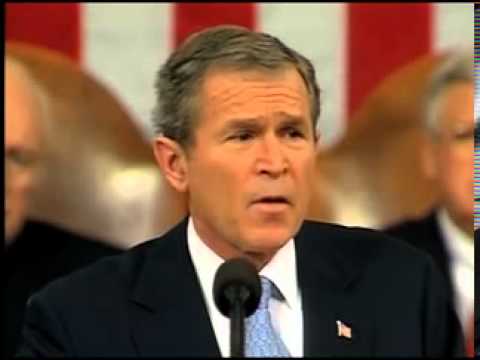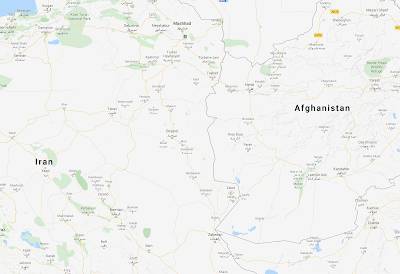
Let's open this posting with a lengthy quote:
"The Afghan war has produced at least one set of improbable bedfellows: the US and Iran. That is why the battle for Herat in southwest Afghanistan on Monday, November 12, stood out from the Northern Alliance’s other rapid-fire wins. Beyond giving the anti-Taliban movement a key city and control over the main routes to Iran and Turkmenistan, winning Herat may be remembered as a turning point for America’s foreign relations outside Afghanistan too, because it brought the US and Iran together militarily for the first time since the anti-American Shiite revolution swept to power in Tehran in 1979. This landmark conjunction is bound to make waves in the India subcontinent, the Persian Gulf and the Middle East.
DEBKA-Net-Weekly’s sources in Washington and Tehran reveal that US Special Forces, mainly Rangers and the Delta Force, mounted the Herat campaign jointly with special force units of Iran’s Revolutionary Guards, the Pazdaran (i.e. the Islamic Revolutionary Guard Corps), a force that symbolizes implacable Iranian Shiite abhorrence for America, the “Great Satan” The last time the two armies met, it was as foes. On April 7, 1980, US commandos led by the crack Delta Force and Iranian special forces confronted each other in a disastrous operation ordered by US President Jimmy Carter to free hundreds of Americans held hostage by Khomeini’s zealots in the U.S. embassy in Tehran. The United States never revealed the cause of its failure. Forewarned, the Iranians waylaid the US Special Forces as they landed on the salt flats of southern Iran. In the ensuing havoc, several US transport planes and helicopters tried to evade Iranian fire and take off in a hurry. A Hercules C-130 collided with one of the American helicopters and both aircraft went up in flames. Seven US commandos were killed that day.
That confrontation 21 years ago is relevant to current events in Afghanistan. Then was the first time in US military history that special forces were armed with computerized communications, navigation and targeting equipment. Each commando carried a personal battlefield computer, providing direct communication between field commanders and headquarters in the rear. Back in 1980, the computers were large and cumbersome, hampering their user’s movements. But the US rescue team was hampered by more than hardware; unbeknownst to Washington, a Soviet intelligence source working with the East German HVA intelligence agency had passed the new US computers’ operating codes to Iran…
The situation in Afghanistan this week was a completely different story. This time, Iranian special forces were freely handed US communications and operational codes in a gesture from Washington to Tehran — freely except for the fact that their range was limited to a radius applicable only to the local US command structure in and around Herat.
According to DEBKA-Net-Weekly’s military sources, the US-Iranian dialogue leading up to this military and intelligence cooperation in Afghanistan began in late September and flowed through two channels: The first had two branches – one, American business representatives employed in the past year by firms with investments in Iran. Those firms were managed by Richard Cheney before he was elected vice president; two, CIA officers left to hold down various undercover duties after the 1991 Gulf War period, when Cheney served the first President Bush as defense secretary. Both groups have been acting as Iran’s lobby in Washington, advocating the lifting of U.S. economic sanctions and a larger American stake in the Iranian economy. The second channel was military. DEBKA-Net-Weekly’s sources reveal two secret visits to Tehran in recent weeks by General Tommy Franks, Head of US Central Command (covering Afghanistan and the Near East), attended by armed forces staff officers and CIA Iranian Desk staffers. They held intensive discussions with Iranian army and military intelligence chiefs, as well as General Yahya Rahim Safavi, commander of the Revolutionary Guards, on Iran’s contribution to the US war against terror and role in its aftermath.
What the Americans were after was for an Iranian elite unit to cross into Afghanistan, infiltrate Herat and form insurrectionary cells to rise up against their Taliban masters when the Northern Alliance attacked the city. Generals Franks and Safavi agreed on a plan and shaped its details. It worked like clockwork. Iranian commandos set up a secure base for themselves in Herat. A group of eight to 10 US Special Forces officers joined them as the advance guard of the Northern Alliance. Under an Americans guarantee, the thrust into Herat and the central Afghanistan province of Bamayan was left entirely to the forces of the Shi’ite militia chief, former governor Ismail Khan, and no one but the Shi’ite Hazara ethnic contingents led by Karim Khalili were deployed in the city and region. On these terms, Iranian agents organized the local insurrection as arranged and the rebel leader invited the Northern Alliance, or rather, Ismail Khan, to liberate the town.
A US Special Forces team of officers and CIA personnel meanwhile remained in Tehran to oversee the smooth operation of the joint venture — the first time the CIA was allowed to set foot in the Iranian capital since 1979. Not only were they present on this alien terrain, but the Herat campaign had US and Iranian military-intelligence teams working opposite each other for a shared objective. Oddly enough, the American team is still in Tehran even after Herat’s fall, Khan’s takeover and his attempts to consolidate his rule with the help of the Iranian Special Forces still there. According to DEBKA-Net-Weekly’s Iran and Gulf experts, the ramifications of the US team’s presence in the Islamic republic are noteworthy — both in domestic terms and for the region." (my bolds)
This is a transcript of a document released by the Foreign Broadcast Information Service on November 16, 2001. FBIS was a component of the Central Intelligence Agency's Directorate of Science and Technology and was responsible for monitoring, translating and disseminated information from media sources outside the United States within the U.S. government. It had approximately 20 non-covert bureaus located around the world and were manned by both American and foreign nationals who were responsible for collecting and translating foreign open source material with some of the less-time sensitive material being sent to FBIS headquarters in Rosslyn and later Reston Virginia.
What is important to note about this release is the nascent co-operation between the United States and Iran in the early days of the endless war in Afghanistan. Until President George W. Bush gave this speech (6 minute and 53 second mark and onward):
…diplomatic relations between Washington and Tehran appeared to be thawing to the point where the United States was able to call on Iran to back Operation Enduring Freedom, the first stage of its War on Terror. Iran had its own agenda in Afghanistan; the Taliban regime was antagonistic toward Iran and Tehran viewed the Taliban as a security risk. Here is a quote from paper by Sajjan M. Gohel entitled "Iran's Ambiguous Role in Afghanistan":
"In August 1998, the Taliban captured Mazar-i-Sharif, the interim capital of the Northern Alliance. In addition to killing hundreds of Shi`a Muslims, the Taliban stormed the Iranian Consulate in the city and killed eight Iranian diplomats and an Iranian journalist, and held 50 other Iranian nationals captive. Tehran was incensed by the killings and dispatched 200,000 troops to the border as the government decided whether or not to invade. War was averted when the Taliban, after the threat from Iran and under pressure from the United Nations, returned the bodies of the murdered diplomats and sent the remaining Iranian captives home. The killings and the capture of Iranians were seen in Tehran as a national humiliation and perhaps a clear reminder of Tehran’s failed policies in Afghanistan.
During the period of reformist Iranian President Mohammad Khatami, Iranian opposition to the Taliban and its al-Qa`ida ally was such that Tehran cooperated with Washington during Operation Enduring Freedom by providing vital intelligence support to the U.S. war effort."
Here is an additional quote from a paper by Mir N. Sadat and James P. Hughes entitled "U.S.-Iran Engagement Through Afghanistan"
"Following the 9/11 attacks, Iran assisted the U.S. invasion of Afghanistan and participated in international efforts to establish a new Afghan government. A senior Iranian diplomat describes the decision making in Iran immediately after the 9/11 attacks: “[W]e consciously decided not to qualify our cooperation on Afghanistan or make it contingent upon a change in U.S. policy, believing, erroneously, that the impact would be of such magnitude that it would automatically have altered the nature of Iran-U.S. relations.”" (my bold)
One of Iran's key actions in the War on Terror was the uprising in Herat in November 2001 during the early days of Operation Enduring Freedom. Here is a map showing the lengthy frontier that runs between Iran and Afghanistan and the city of Herat:
The uprising in Herat, the third largest city in Afghanistan, was undertaken as a coordinated insurrection by Afghanistan's Northern Alliance, Special Forces of the United Kingdom and the Islamic Republic of Iran. The city was captured on November 12, 2001. The U.S. forces were led by General Tommy Franks, the Northern Alliance was led by Ismail Khan, the Islamic Revolutionary Guard Corps (IRGC) were led by Major General Yahya Rahim Safavi and the Quds Force, the IRGC's division responsible for extraterritorial military and clandestine operations, was led by none other than the recently assassinated Qasem Soleimani.
As an aside, it is important to note that Iran provided American military forces with reliable intelligence data regarding the Taliban, it arrested and deported hundreds of Taliban and al-Qaeda fighters that had crossed into Iran for sanctuary and provided search and rescue for American air crews that had been shot down. Iran also allowed the offloading of humanitarian supplies destined for Afghanistan at its Chah Bahar port and offered access to its airfields located near the Afghanistan border for use by the United States and its allies. Once the Taliban government was overthrown in late 2001, Iran played a key role in efforts to emplace a new and friendly Afghani government and pledged (and honoured those pledges) for reconstruction. As I noted above in the quote from Sadat and Hughes' paper, this was done because Tehran believed that its support for the War on Terror would lead to better relations with Washington. Such was not to be the case.
If there is one thing that history can teach us it's that foreign nations and their leaders that try to curry "friendship" with the United States are playing a game that they are certain to lose in the long run. Just ask Manuel Noriega of Panama how his relationship with Washington turned out. Qasem Soleimani learned his lesson the hard way.
Click HERE to read more from this author.
You can publish this article on your website as long as you provide a link back to this page.


Be the first to comment